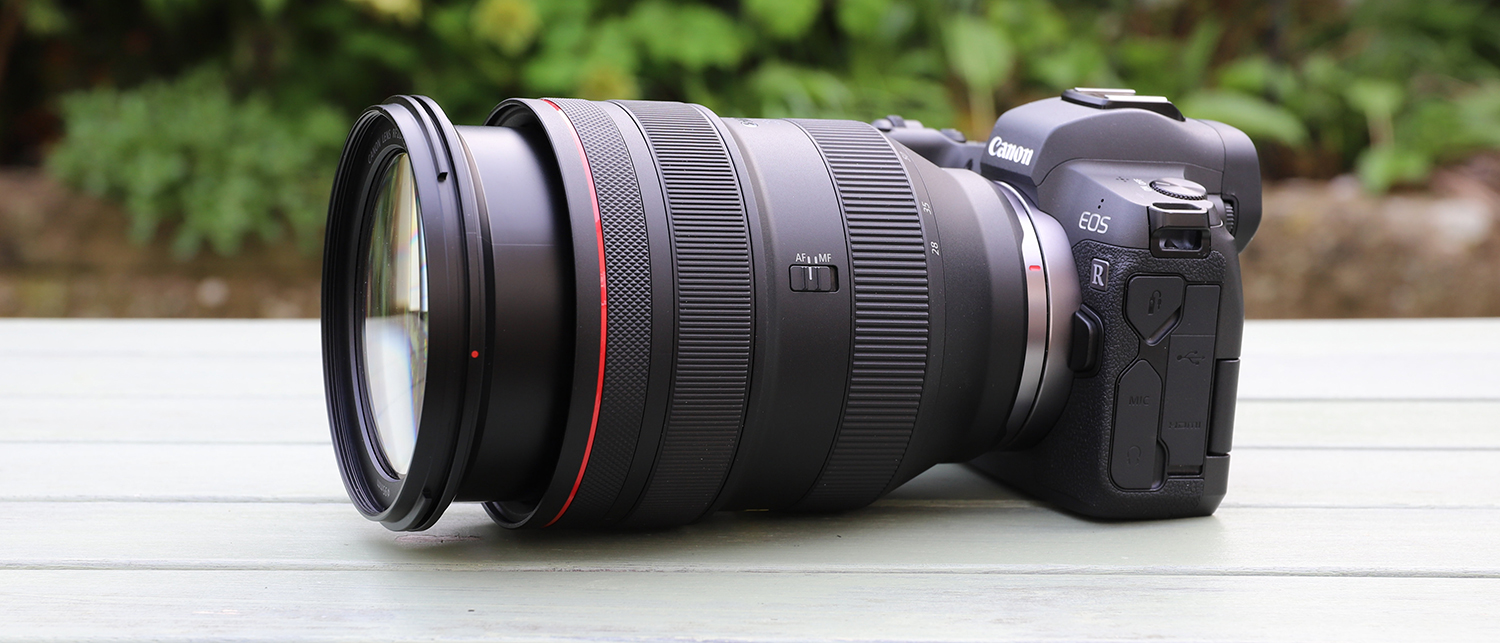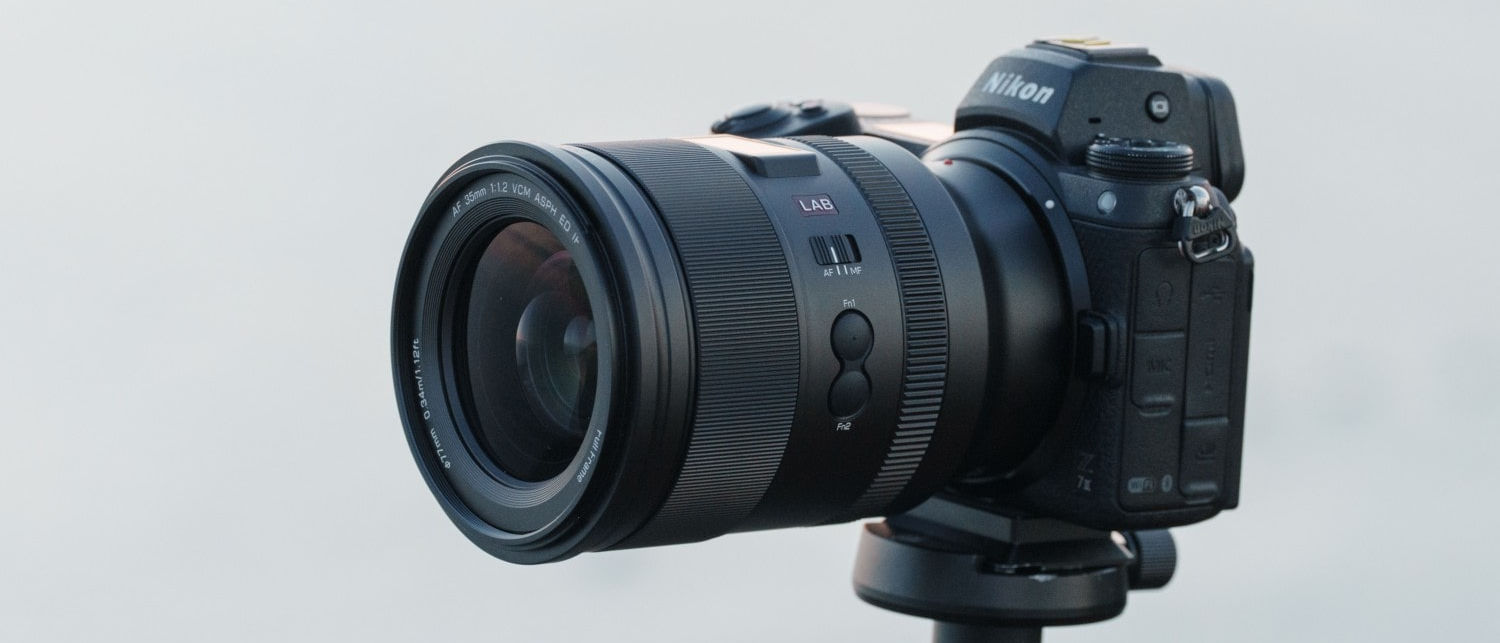Digital Camera World Verdict
It’s a fabulous lens that really can rival three or four separate prime lenses. Apart from lackluster corner-sharpness at 28mm, image quality is spectacular in all other respects. The sheer bulk and weight, however, feel a mismatch for a mirrorless body, leaving an f/2.8-sized gap in Canon’s RF line-up.
Pros
- +
Gorgeous image quality
- +
Fast f/2 aperture
- +
Weather-sealed construction
Cons
- -
Big, heavy and expensive
- -
No tripod collar
- -
No image stabilization
Why you can trust Digital Camera World
One of the main attractions of the Canon EOS R and EOS RP bodies is their comparatively compact and lightweight build, compared with full-frame DSLRs. Following suit, the Canon RF 24-105mm f/4L IS USM standard zoom lens shaves off 11mm in length and 95g in weight, compared with its EF L-series counterpart.
By contrast, the Canon RF 28-70mm f/2 is a monster. It’s much bigger than it's EF opposite number, measuring 104x140mm, and about twice as heavy, at 1,430g. It’s also nearly twice the weight and twice the price of Canon’s top-spec EF 24-70mm f/2.8 lens, weighing about the same as a 70-200mm f/2.8 zoom.
The RF lens’s upscaled build is mainly due to it being a full f/stop faster than most premium standard zooms – with a maximum aperture at all focal lengths of f/2. The optical elements need a larger diameter to let in more light and, as such, the lens has an oversized 95mm filter thread, despite its more limited zoom range with less wide-angle potential than a 24-70mm. Instead, the design goes all out for premium image quality with minimal distortions.
You could argue that, with its f/2 aperture and premium optical design, this zoom lens performs more like four prime lenses with 28mm, 35mm, 50mm and (nearly) 85mm focal lengths. The zoom lens might therefore represent a saving in size and weight, while also reducing the need to swap the lens mounted on the camera.
• Best Canon RF lenses for EOS R and EOS RP

Even so, a prime lens with a similar aperture rating would equate to a much more compact, lightweight shooting package hanging around your neck – even if it meant popping a couple of extra lenses in your bag. The lack of a mount ring makes for a poor balance when using a tripod or monopod.
Canon advertises the lens as being great for travel photography, weddings and photojournalism. We’d say it’s uncomfortably large and heavy for a travel lens but it has distinct advantages for the other two uses. Along with zoom versatility for quickly framing compositions, the fast aperture rating enables a tight depth of field, along with fast shutter speeds for freezing motion, even under very dull lighting conditions.
The best camera deals, reviews, product advice, and unmissable photography news, direct to your inbox!
Freezing camera-shake is more of a challenge, adding another question mark over Canon’s decision not to fit IBIS (in-body image stabilization) to the EOS R and RP cameras.
The top-notch optical design incorporates two ground aspherical elements, two Glass-Moulded (GMo) aspherical elements, two UD (Ultra-low Dispersion) elements and one Super UD element. Multiple coatings include SWC (Subwavelength Structure Coating) and ASC (Air Sphere Coating).

Canon RF 28-70mm f/2L USM: Performance
Autofocus is very fast but not completely silent, based on a ring-type ultrasonic system rather than a stepping motor or Nano USM. Centre-sharpness is spectacular throughout the entire zoom range, even when shooting wide open at f/2, although corner-sharpness at the short end is disappointing.
Contrast and color rendition are superb, while lateral chromatic aberrations and distortions are minimal. At f/2, bokeh is beautiful with negligible longitudinal or ‘bokeh’ fringing, and wonderfully smooth transitions from sharp to defocused areas.
Canon RF 28-70mm f/2L USM: Lab tests
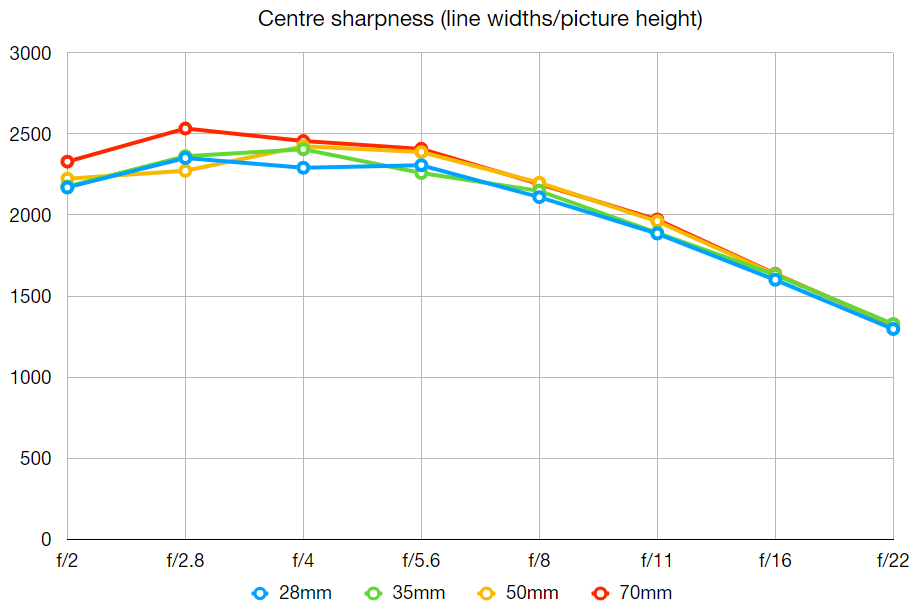
Centre sharpness is excellent at all focal lengths and across a wide aperture range, only trailing off at f/16...

...but it's a different story when it comes to corner-frame sharpness, which is surprisingly soft for such a highly-specced - and priced - optic. Performance is at best average at longer focal lengths, but at 28mm and 35mm corner sharpness is just plain poor at fast to medium apertures. Wide-angle lenses never score as highly for corner sharpness relative to their centre-frame scores, but this lens is particularly disappointing in this respect.
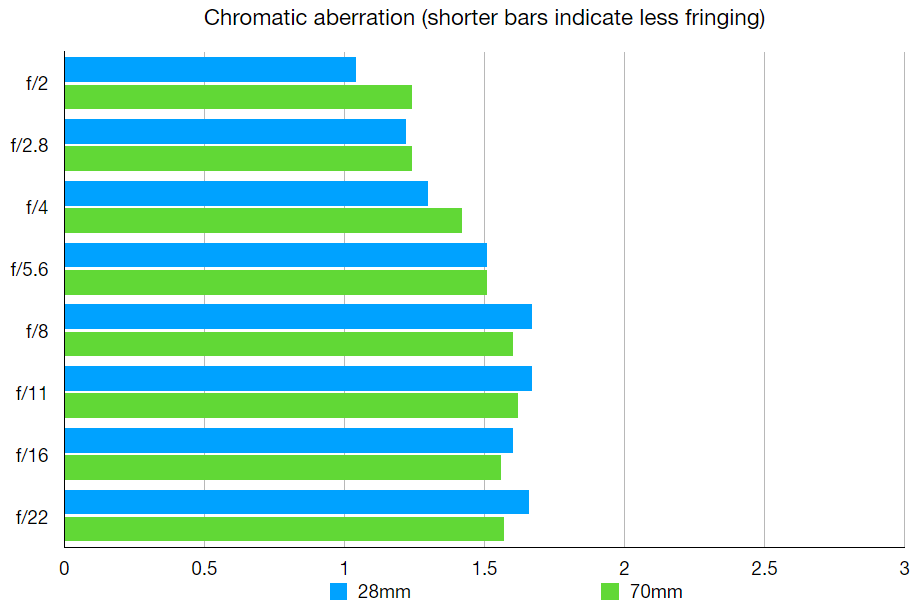
Chromatic aberration is visible at all focal lengths and apertures, but only at the edges of frame, and it isn't distracting.
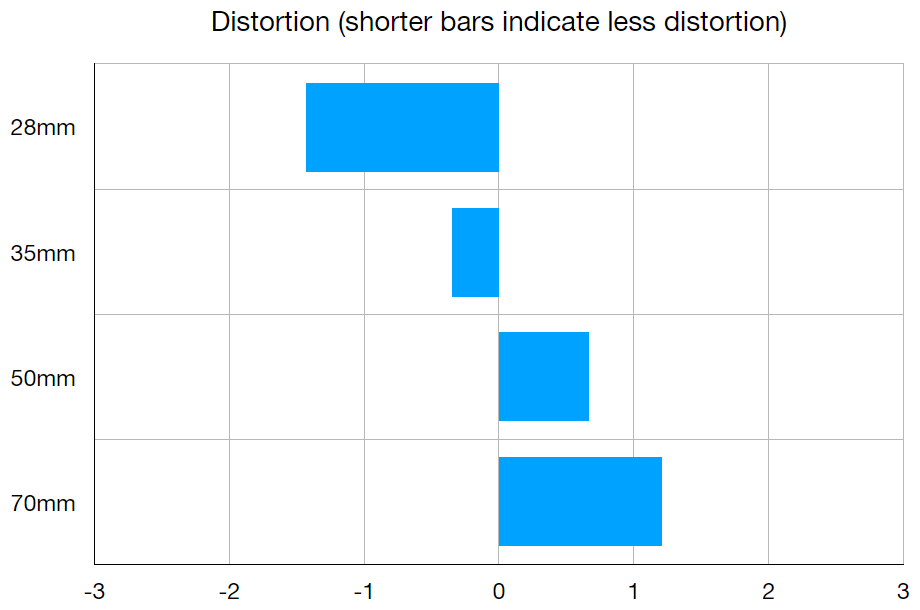
Distortion is evident but it's nothing major, transitioning from moderate barrel distortion at 28mm through to equally negligible pincushion distortion at 70mm.
Canon RF 28-70mm f/2L USM: Verdict
It’s a fabulous lens that really can rival three or four separate prime lenses. Apart from lackluster corner-sharpness at 28mm, image quality is spectacular in all respects. However, the sheer bulk and weight feel a mismatch for a mirrorless body, leaving an f/2.8 sized gap in Canon’s RF line-up.
In terms of pure performance, there's no doubt that the RF 28-70mm delivers fierce results. Unfortunately, its hulking heft might make it unwieldy for many of the applications for which you'd want to use it. Lugging this around for a full day's shooting will give your forearms a serious workout. Without stabilization in either body or lens, though, you might struggle with sharpness if your forearms aren't as mighty as Popeye's.
Read more
Canon RF 24-105mm f/4 L IS USM review
Canon RF 35mm f/1.8 IS Macro STM review
Canon RF 50mm f/1.2L USM review
The best mirrorless cameras in 2019
Matthew Richards is a photographer and journalist who has spent years using and reviewing all manner of photo gear. He is Digital Camera World's principal lens reviewer – and has tested more primes and zooms than most people have had hot dinners!
His expertise with equipment doesn’t end there, though. He is also an encyclopedia when it comes to all manner of cameras, camera holsters and bags, flashguns, tripods and heads, printers, papers and inks, and just about anything imaging-related.
In an earlier life he was a broadcast engineer at the BBC, as well as a former editor of PC Guide.
